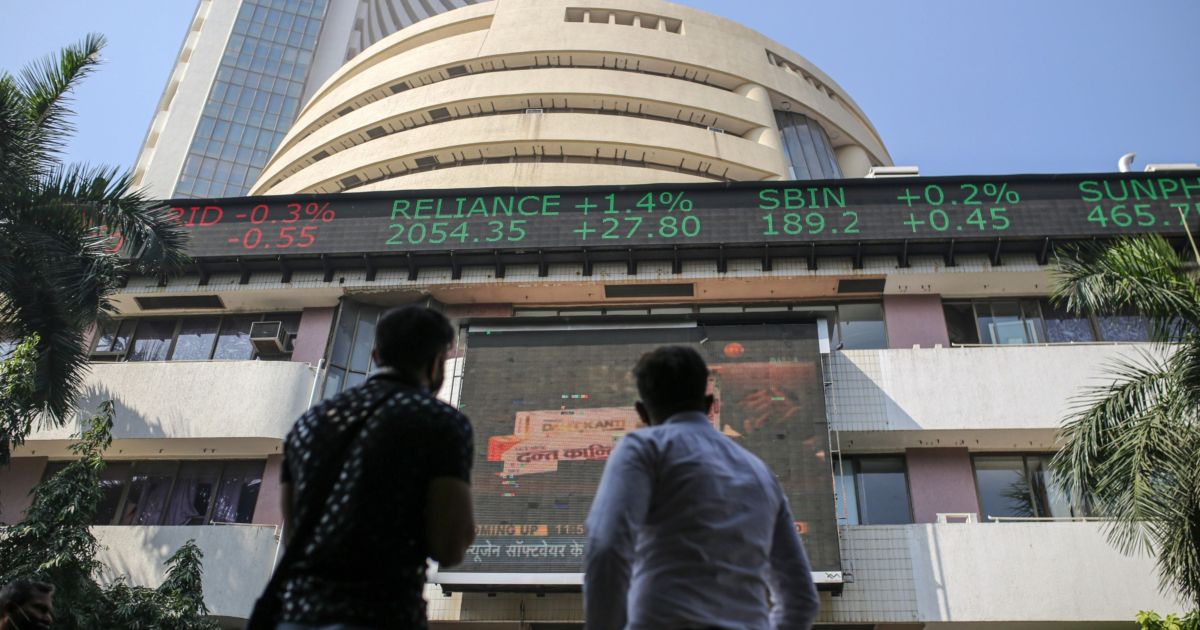[ad_1]
A person sporting a protecting masks, amid the coronavirus illness (COVID-19) outbreak, walks previous an digital board displaying graphs (prime) of Nikkei index outdoors a brokerage in Tokyo, Japan, March 10, 2022. REUTERS/Kim Kyung-Hoon
Register now for FREE limitless entry to Reuters.com
SYDNEY, March 15 (Reuters) – Asian shares have been within the pink on Tuesday as surging COVID-19 circumstances in China hit the arrogance of buyers who’re already fearful in regards to the Ukraine warfare and the primary U.S. rate of interest rise in three years that might come this week.
MSCI’s broadest index of Asia-Pacific shares outdoors Japan (.MIAPJ0000PUS) fell 1.97%, led by pronounced weak spot in Chinese language shares. The index is down 8.2% to this point this month.
World oil costs fell in a single day as prospects of talks between Russia and Ukraine reaching some sort of decision eased fast issues about power provide disruption. learn extra
Register now for FREE limitless entry to Reuters.com
These losses prolonged into the Asian session, nevertheless, the investor focus had shifted to the demand facet, with China’s new wave of COVID-19 infections casting a cloud over the outlook for the world’s second-largest economic system.
Extra broadly, an absence of main progress seen in Ukraine-Russia talks on Monday added to the nervousness in fairness markets whereas issues at the moment are rising in regards to the potential for brand spanking new tensions between China and United States.
Washington has warned Beijing towards offering army or monetary assist to Moscow after its invasion of Ukraine, as sanctions on Russian political and enterprise leaders mount. learn extra
“The query we’re asking is whether or not the markets have reached peak bearishness,” stated Jack Siu, Credit score Suisse’s chief funding officer for Higher China.
“We all know there was loads of dangerous information, there could possibly be worse to come back, inventory costs have fallen considerably and there’s no readability on any resolutions from U.S. regulators in the direction of Chinese language listed shares there.”
Hong Kong’s Dangle Seng Index (.HSI) remained mired in unfavorable territory Tuesday, dropping 4% following an virtually 5% selloff a day earlier. Hong Kong’s major board is down 17% to this point in March.
The town’s tech index (.HSTECH) has been hammered, falling practically 30% this month as buyers fear in regards to the subsequent regulatory crackdown from U.S. and Chinese language authorities on the sector.
China’s CSI300 index (.CSI300) was down 1.78%, pushing its losses for the month out to 11.2%. Australian shares (.AXJO) closed down 0.73%.
Shrugging off the weak spot in Asia, nevertheless, inventory futures for the S&P 500 rose 0.21% whereas Tokyo’s Nikkei Index (.N225) reversed its losses and was marginally greater, up 0.22%.
Including to the general unfavorable sentiment for markets are rising case numbers of COVID-19 in China, which buyers worry will harm the mainland’s financial development within the first quarter. learn extra
China on Tuesday reported 3,602 new confirmed coronavirus circumstances in contrast with 1,437 on Monday. learn extra .
Throughout the Asian session, U.S. crude slipped an additional 5.2% to $97.66 a barrel. Brent crude was down 5.16% to $101.37 per barrel. learn extra
“Proper now everyone seems to be wanting on the Chinese language circumstances and realising that has to affect manufacturing,” stated Hong Hao, BOCOM Worldwide’s head of analysis.
“China’s development within the first quarter could possibly be nearer to zero than 5.5%. There is a ripple impact. There’s Ukraine, the chance of U.S. sanctions on China and rising Chinese language home COVID circumstances – it doesn’t look good.”
Investor focus can also be on the U.S Federal Reserve, which meets on Wednesday and is predicted to hike rates of interest for the primary time in three years to offset rising inflation.
Wall Avenue skilled a combined session, with declining know-how firms prompting most indexes to shut decrease Monday. learn extra
The yield on the benchmark 10-year Treasury notes rose to 2.1384%.
The 2-year yield , which rises with merchants’ expectations of upper Fed fund charges, touched 1.865%, up from 1.849%.
Gold was additionally weaker in Asia with the spot value at $1,932.1 per ounce.
Register now for FREE limitless entry to Reuters.com
Reporting by Scott Murdoch in Sydney; Enhancing by Sam Holmes
Our Requirements: The Thomson Reuters Belief Ideas.
[ad_2]
Source link















